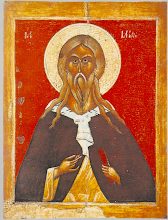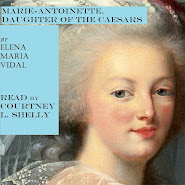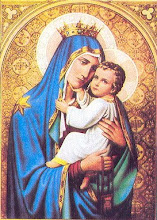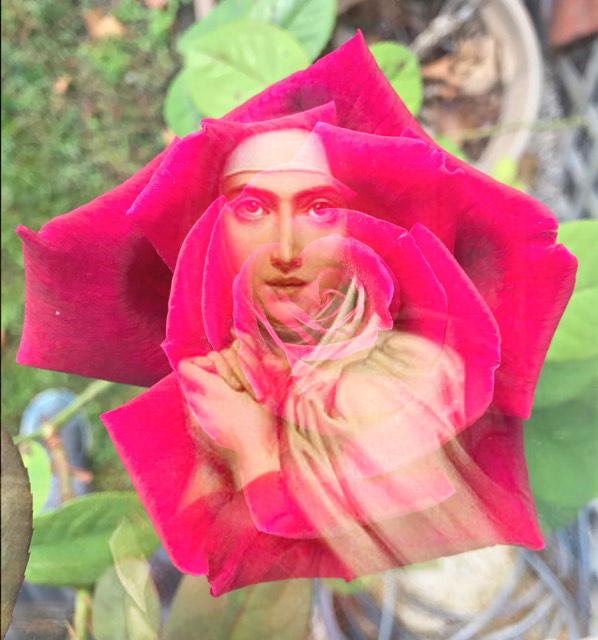Today I would like to speak to you about Joan of Arc, a young saint from the end of the Middle Ages, who died at age 19, in 1431....We could place her next to the holy women who stayed on Calvary, close to Jesus crucified, and Mary, his mother, while the apostles fled and Peter himself denied him three times.
In her times, the Church lived the profound crisis of the great Western schism, which lasted almost 40 years. When Catherine of Siena died, in 1380, there was a pope and an anti-pope. When Joan was born, in 1412, there was a pope and two anti-popes. In addition to this laceration within the Church, there were continuous fratricidal wars between the Christian peoples of Europe, the most tragic of which was the interminable 100 Years War between France and England.
Joan of Arc could not read or write, but she can be known in the depth of her soul thanks to two sources of exceptional historical value: the two trials she underwent. The first, the "Trial of Conviction," contains the transcription of the long and numerous interrogations of Joan during the last months of her life (February-May of 1431), and includes the words of the saint herself. The second, the "Trial of Nullity of the Sentence," or of "rehabilitation," contains the testimonies of close to 120 eye-witnesses from all the periods of her life (cf. Procès de Condamnation de Jeanne d'Arc, 3 vol. and Procès en Nullité de la Condamnation de Jeanne d'Arc, 5 vol., ed. Klincksieck, Paris l960-1989)....
Joan's passion began on May 23, 1430, when she fell prisoner in the hands of her enemies. On Dec. 23 she was taken to the city of Rouen. Carried out there was the long and dramatic Trial of Conviction, which began in February of 1431 and ended on May 30 with the stake. It was a grand and solemn trial, presided over by two ecclesiastical judges, Bishop Pierre Cauchon and the inquisitor Jean le Maistre, but in reality led entirely by a large group of theologians of the famous University of Paris, who took part in the trial as consultants. They were French ecclesiastics who had political leanings opposed to Joan's, and who thus had a priori a negative judgment on her person and her mission. This trial is a moving page of the history of sanctity and also an illuminating page on the mystery of the Church that, according to the words of the Second Vatican Council, is "at the same time holy and always in need of being purified" ("Lumen Gentium," 8). It was the dramatic meeting between this saint and her judges, who were ecclesiastics. Joan was accused and judged by them, to the point of being condemned as a heretic and sent to the terrible death of the stake. As opposed to the holy theologians who had illuminated the University of Paris, such as St. Bonaventure, St. Thomas Aquinas and Blessed Duns Scotus, of whom I have spoken in other catecheses, these judges were theologians lacking in charity and humility to see in this young woman the action of God. Jesus' words come to mind according to which the mysteries of God are revealed to those that have the heart of little ones, while they remain hidden from the learned and wise who are not humble (cf. Luke 10:21). Thus Joan's judges were radically incapable of understanding her, of seeing the beauty of her soul: They did not know they were condemning a saint.
Joan's appeal to the pope's intervention on May 24 was rejected by the court. On the morning of May 30 she received holy Communion for the last time in prison, and immediately after she was taken to her ordeal in the square of the old market. She asked one of the priests to put in front of the stake the cross of the procession. Thus she died looking at Jesus crucified and pronouncing many times and in a loud voice the Name of Jesus (PNul, I, p. 457; cf. Catechism of the Catholic Church, 435). Almost 25 years later, the Trial of Nullity, opened under the authority of Pope Calixtus III, concluded with a solemn sentence that declared the condemnation null and void (July 7, 1456; PNul, II, p. 604-610). This long trial, which includes the statements of witnesses and judgments of many theologians, all favorable to Joan, highlights her innocence and her perfect fidelity to the Church. Joan of Arc was canonized in 1920 by Benedict XV.
William F. Buckley at 100
14 hours ago
























